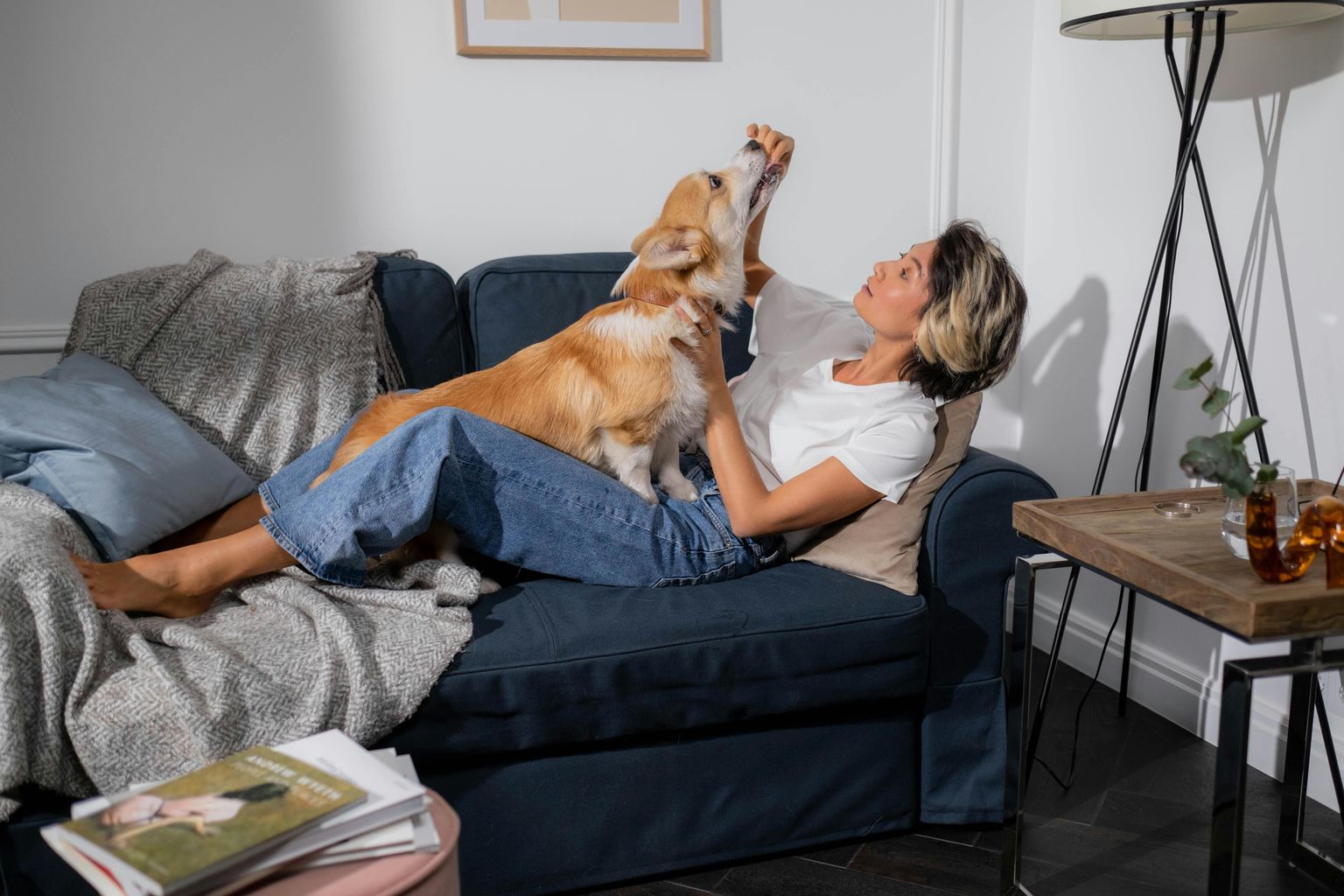Interactive pet cameras have become more popular over the past few years, thrilling owners at the prospect of seeing, talking to, playing and even giving treats to their dogs remotely.
The idea is undoubtedly appealing: pop by during lunchtime, soothe your dog with your voice, and give them a treat with just a tap on your phone.
But are they actually good for your dog, or are they more about comforting our own conscience than addressing our pets' needs?
The answer, as with so many modern products, is multifaceted. Pet cameras can be useful, but they are not a one-size-fits-all, and never a replacement for real-life companionship, training, and exercise.
The Upside: How Can Pet Cameras Help?
There are, of course, some very real benefits that pet cameras can offer for you and your dog.
They Can Reduce Owner Anxiety
For many, the main benefit of a pet camera isn’t for the dog but for you. Knowing your dog is sleeping peacefully can be reassuring, especially for new owners or those with senior dogs. This peace of mind helps owners stay calm and focused during the day.
They Bring Comfort to Certain Dogs
Some dogs respond well to hearing their owner’s voice, which can break up long periods alone, especially for our doggies with mild separation anxiety. Many interactive cameras also dispense treats or activate toys, which can help provide brief bursts of positive stimulation while you’re at work.
They Provide Real-Time Monitoring of Behavior
Pet cameras show what your dog does when you are away, whether napping, pacing, chewing furniture, or barking at the mailman. This footage can be invaluable when working with a trainer or vet to monitor or address behavioral issues.
The Limitations: Why Pet Cameras Aren't a Cure-All
Despite their benefits, pet cameras have important drawbacks to consider:
Not All Dogs Like It
Dogs are individuals. Some will tilt their heads in amazement at the sound of your voice through a speaker; others will be perplexed, stressed or irritated to hear you and not be able to find or smell you. For highly anxious dogs, a voice with nobody may even heighten tension.
No Replacement for Physical Contact
A treat tossed by a machine is not the same as a game of tug, an energetic walk, or a snuggle party. Canines are pack animals that need real, bodily contact. Pet cameras cannot provide exercise, touch love, or sensory stimulation that dogs crave, so it’s important to remember that pet cameras aren’t a replacement for real interaction.
Over-Reliance Risk
Owners may feel as if they're “spending time” with their dog via the camera and neglect to plan adequate in-the-world interaction. In extreme cases, technology creates a false sense of meeting your dog's needs, while actual enrichment and socializing are put on the back-burner.
Behavioral Considerations
Before purchasing an interactive pet camera, consider how your dog feels when you leave. Severely anxious dogs might need a program of structured behavior change, rather than a device.
For such dogs, the sound of your voice without the benefit of seeing you in the flesh could potentially perpetuate their distress.
On the other hand, a calm dog may welcome the excitement of a midday greeting and treat. However, it could also inadvertently work to reinforce negative behavior.
For example, if you are talking to or feeding your dog via the camera when your dog whines or barks, you could be reinforcing the behavior you're attempting to reduce.
Best Practices for Using Pet Cameras
If you plan on using an interactive pet camera, there are some things you can do to limit its potential negative effects.
Test Your Dog's Response
Start by getting your dog used to the camera while you’re still in the house. Speak through it, offer a treat, and note your dog's response. If they seem upset or perplexed, don't use it.
Combine with Enrichment
Use the camera alongside other elements or an overall plan that incorporates puzzle feeders, chew toys, and a safe place for your dog. This keeps them engaged with multiple channels for their energy and curiosity.
Consider Tools to Enhance Performance
Interactive pet cameras need a consistently strong internet connection to function correctly. Dropped connections interrupt the experience and can frustrate both you and your pet.
If you experience frequent disruptions, you can test solutions to improve your connection’s stability. Lots of gamers use a VPN for games to reduce lag and keep consistent speeds, so you can try the same principle for your pet camera.
Don't Overdo It
Keep interactions brief and positive. The aim is to add a small spark of rapport – not to substitute for the meaningful connection you share when you come back home!
Keep Your Priorities Straight
Consider the camera a helpful hand, but not a primary caregiver. Regular walks, playtime, training, and cuddle time are non-replaceable aspects of your dog's well-being.
The Bottom Line
Interactive pet cameras can be valuable for some dogs and owners, offering reassurance, behavioral insights, and brief connection. However, they should never replace real companionship. Dogs need exercise, human contact, and routine to thrive.
Used wisely, these tools can strengthen your bond and ease time apart, but should complement and not replace the daily love and attention your dog needs.

















